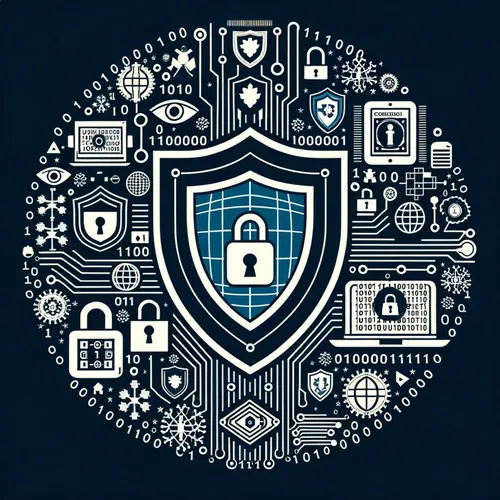Cyber Sirens Blare: Beijing's Salt Typhoon Unleashes Digital Deluge on US Defense
- Author
- Quiet. Please
- Published
- Mon 01 Sep 2025
- Episode Link
- https://www.spreaker.com/episode/cyber-sirens-blare-beijing-s-salt-typhoon-unleashes-digital-deluge-on-us-defense--67583908
This is your Tech Shield: US vs China Updates podcast.
You all know the drill—Ting here, your go-to voice for decoding the latest in US vs China cyber chess. Forget the slow build-up; this past week’s been like DEFCON Red Alert for US cyber defenders facing Beijing’s digital battering ram, especially with that notorious Salt Typhoon group still flooding newsfeeds. The US Cybersecurity and Infrastructure Security Agency, working with international allies from the UK, Germany, Japan, and more, unleashed an advisory ranking Salt Typhoon’s cyber hits as a bona fide national defense crisis. Why? These hackers aren't just trolling government websites—they’ve reportedly infiltrated at least 200 companies in 80-plus countries, tapping into everything from AT&T and T-Mobile to government, military, and transportation networks. Imagine the digital equivalent of a pipeline spill… but instead of oil, it’s call records and geolocation data leaking everywhere. Brett Leatherman at the FBI called this a wake-up for “stronger collaboration” with allies to defend American lives and infrastructure right at the core.
The FBI’s counterstrike? They issued an updated playbook for security pros: Hunt for the telltale signs of Salt Typhoon, deploy mitigations, tighten configurations, and never trust that mysterious ping from outside the firewall. There’s even a $10 million bounty for info on the culprits—now that’s putting some spice in “cyber defense budget.”
Meanwhile, the NSA dropped a bombshell of their own—Salt Typhoon’s gone beyond the big telecom fish, breaking into state agencies and even, get this, targeting communications from US presidential candidates. Add in the latest advisory—hot off the press September 1st, 2025—and you’ve got a stew of technical guidance on stopping Chinese hackers from planting backdoors and stealing the crown jewels of American research. Speaking of jewels, academia isn’t spared; the National Counterintelligence and Security Center warns China’s intelligence networks are harvesting intellectual property from labs to launch the next gen of AI, nuclear, and quantum tech. Many universities have become digital battlegrounds, not just lecture halls.
Industry seems to be waking up—take the Federal Communications Commission finally overhauling submarine cable licensing rules to close old security gaps, or CISA’s emergency directive on patching fresh vulnerabilities in hybrid cloud setups. Big tech, telecoms, and water utilities are rolling out new encryption, anomaly detection, and multi-channel verification to block AI-driven phishing that can clone your CEO’s voice. Bob at Bob’s Guide even says, “This threat fundamentally breaks single-channel verification”—so now, that desperate call from ‘the boss’ demanding a wire transfer gets a second look, or at least a Teams message.
Are these measures working? The consensus among cyber hawks like Sean Cairncross, America’s new national cyber director, is: “We’re making progress,” but the pace of Chinese offensive innovation still outstrips defense. The Salt Typhoon campaign exposed the fragility of global networks with a single compromised provider endangering millions. Experts are now calling for deep reforms—think global standards, next-gen AI threat detection, and a lot more cross-border teamwork.
Gaps? Oh, there are plenty: Supply chain risk is still massive. Academia needs stricter data controls. And the psychological tricks enabled by AI-driven social engineering are outstripping what training and basic protocols can handle.
Thanks for tuning in to this high-voltage update! Don’t forget to subscribe for your next deep dive into the cyber shadows, and—quiet please—this has been a quiet please production, for more check out quiet please dot ai.
For more http://www.quietplease.ai
Get the best deals
